 |
|
ULA Social | AEHF-5
|
|
Page One of Two |
|
 |
|
The United Launch Alliance (ULA) Social participants at Space Launch Complex 41 as seen in a tweet from ULA. |
|
 |
|
The Atlas V Launch Control Center in the Atlas Spaceflight Operations Center (ASOC).This room will be filled with people for the launch. |
|
 |
|
| The view of Space Launch Complex 41 (SLC-41) with the AEHF-5 Atlas V on the pad as seen from the roof of the ASOC. The large building at center is the old Titan IV Solid Rocket Motor Assembly and Readiness Facility (SMARF). | |
 |
|
| The Atlas V booster undergoing processing in the ASOC for the Crewed Flight Test that will carry astronauts to the International Space Station aboard Boeing's CST-100 Starliner spacecraft. | |
 |
|
 |
|
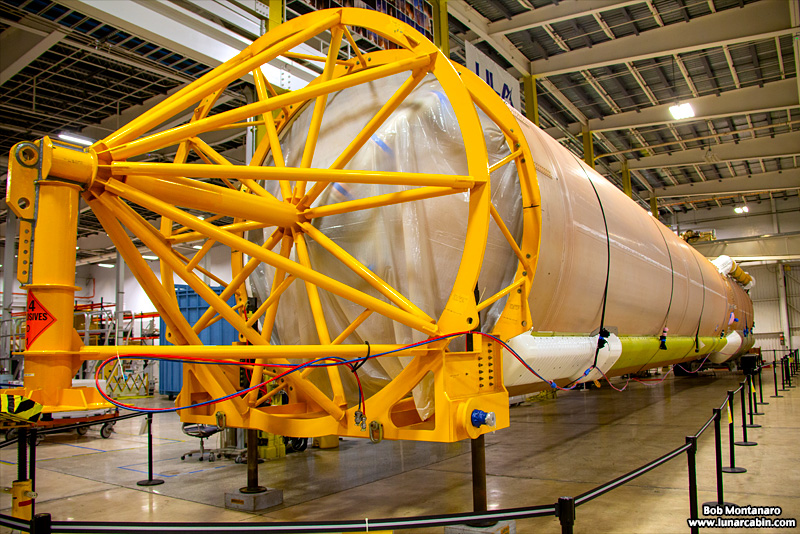 |
|
 |
|
| The Atlas V is constructed of structurally stable aluminum isogrid tanks. An interior section of which can be seen here showing the isogrid pattern. | |
 |
|
| The Vertical Integration Facility at SLC-41, seen at left, is a 286-foot tall steel structure where the Atlas V vehicle components and its payload are stacked vertically on the Mobile Launch Platform, which is then moved by rails to the launch pad. Far down the road at center is the old Titan IV Vertical Integration Building. Closer up the road to the right is the SMARF. | |
 |
|
SLC-41 with the AEHF-5 Atlas V on the pad. The Atlas V is flying in its 551 configuration meaning it has a 5-meter payload fairing, 5 solid rocket boosters, and 1 Centaur engine on its second stage. |
|
 |
|
From the ULA AEHF-5 mission overview giving details about the Atlas V and its Centaur upper stage: Centaur |
|
 |
|
| A portion of the payload fairing showing the various mission decals. Again, from the AEHF-5 mission overview: Payload Fairing (PLF) The spacecraft is encapsulated in a 5-m (17-ft) diameter short payload fairing. The 5-m PLF is a sandwich composite structure made with a vented aluminum-honeycomb core and graphite-epoxy face sheets. The bisector (two-piece shell) PLF encapsulates both the Centaur and the satellite. The vehicle’s height with the 5-m short PLF is approximately 197 ft.. |
|
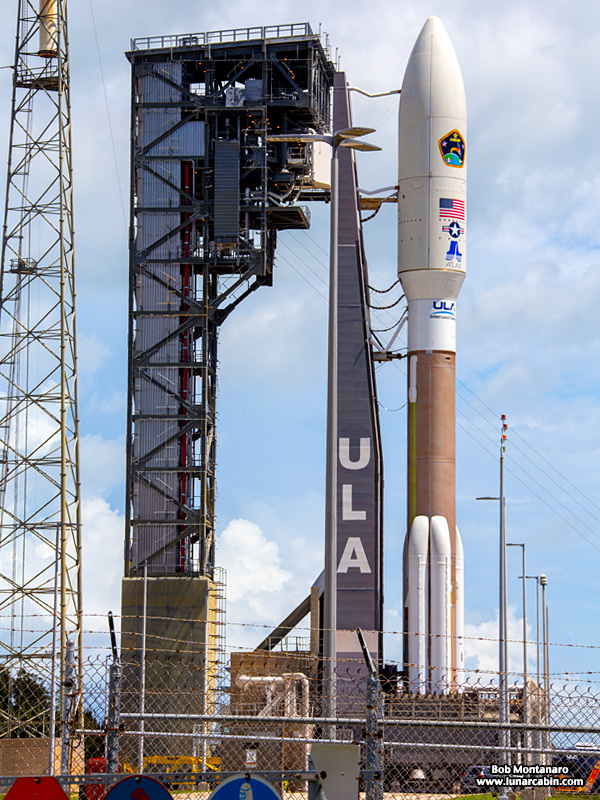 |
|
 |
|
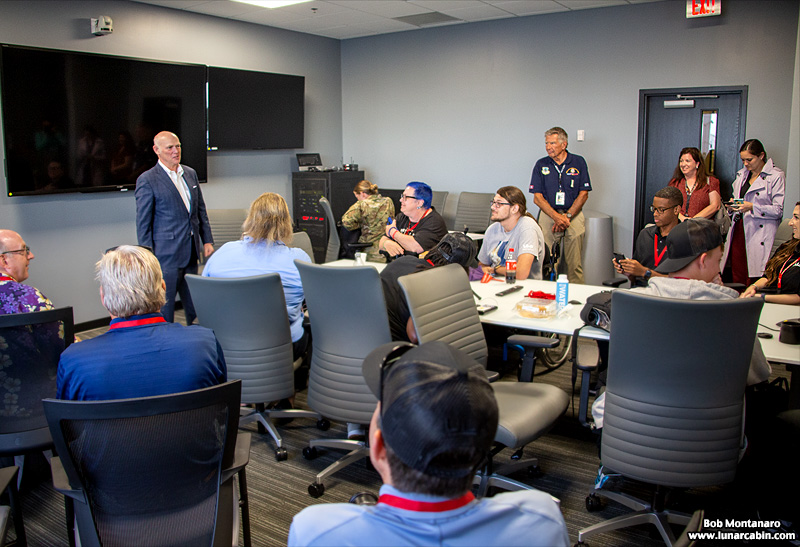 |
|
| Back at the ASOC the ULA Social heard from a number of speakers concerning the AEHF-5 mission along with meeting United Launch Alliance CEO Tory Bruno. | |
 |
|
| Besies being an executive, Tory Bruno is also aerospace engineer. He discussed ULA's current projects along with an update on the development of ULA's new Vulcan rocket. | |
 |
|
| The day ended with a tour of the Morrell Operations Center (MOC) containing the 45th Space Wing's range operations center and the weather squadron at Cape Canaveral Air Force Station. | |
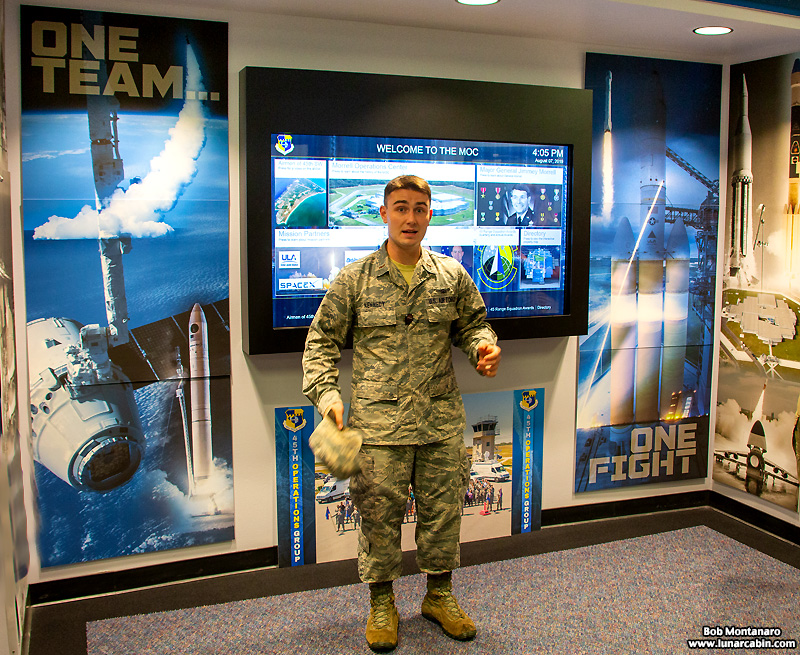 |
|
The MOC works to ensure public safety while providing support for all the users of the Eastern Range. |
|
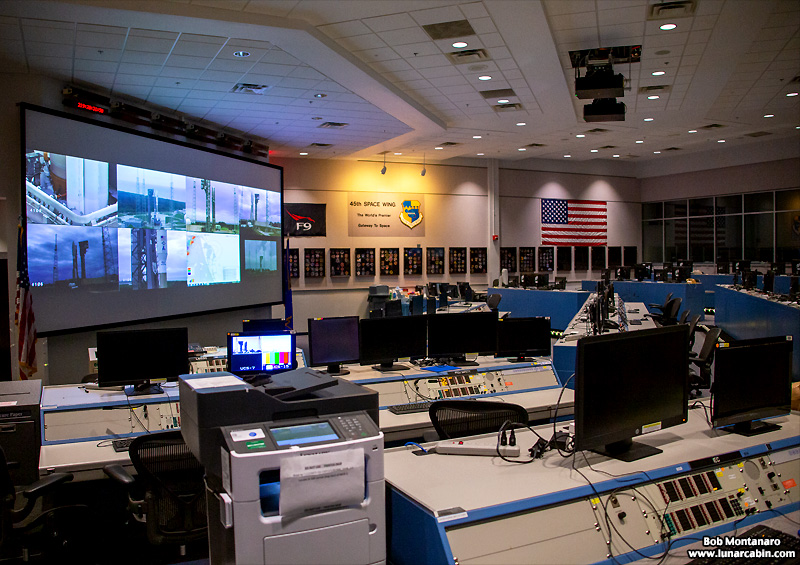 |
|
A view of the range operations center set up for the AEHF-5 Atlas V launch the next day. |
|
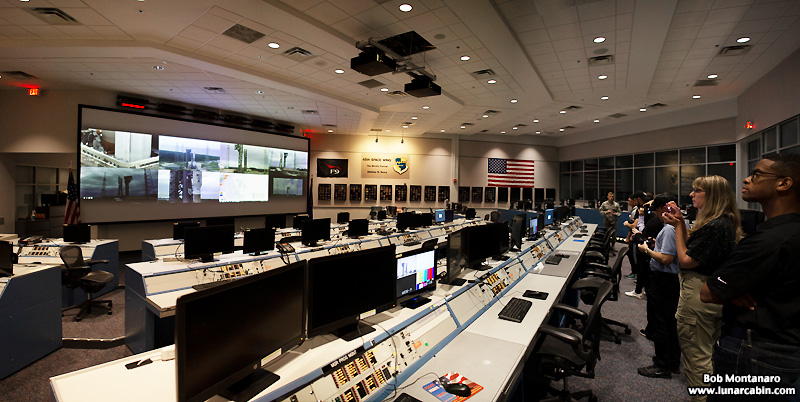 |
|
As a function of range safety, a rocket's flight is monitored from here and its flight can be terminated if it goes off course. |
|
 |
|
The range is also monitored for intrustions into the range, like a boat or plane gone astray, that might pose a hazard to safety or operations. |
|
 |
|
 |
|
| A view of the 45th Weather Squadron Multi-Domain Operations Center where the weather is closely monitored in support of launch operations. | |
Go to Page Two of Two > > > |
|
All contents copyright Lunar Cabin |
|